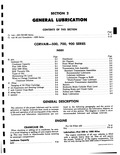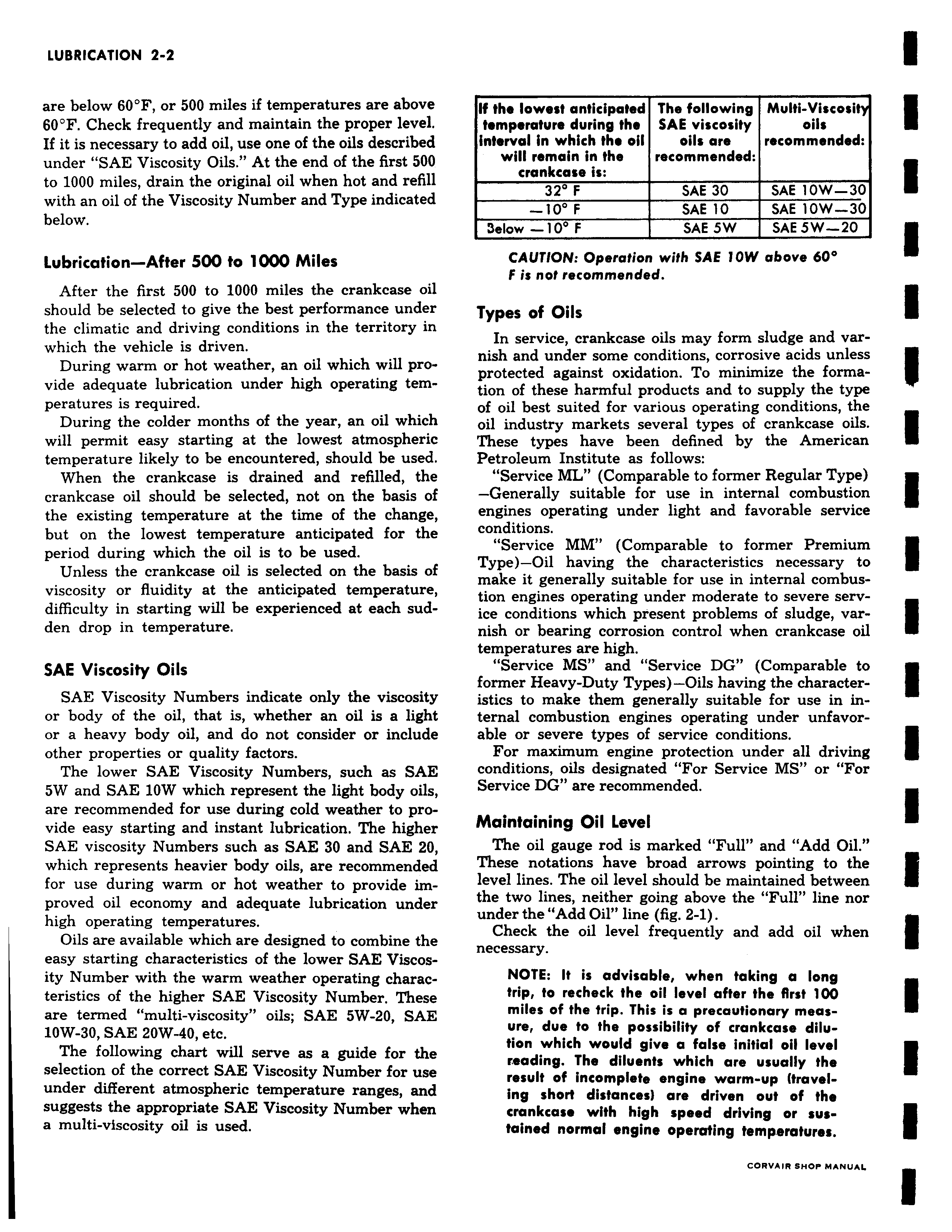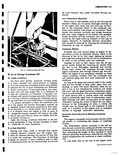Jeep Parts Wiki | Ford Parts Wiki
Home | Search | Browse
Prev

 Next
Next
are below 60 F or 500 miles if temperatures are above 60 F Check frequently and maintain the proper level If it is necessary to add oil use one of the oils described under SAE Viscosity Oils At the end of the first 500 to 1000 miles drain the original oil when hot and refill with an oil of the Viscosity Number and Type indicated below Lubrication After 500 to 1000 Miles After the first 500 to 1000 miles the crankcase oil should be selected to give the best performance under the climatic and driving conditions in the territory in which the vehicle is driven During warm or hot weather an oil which will provide adequate lubrication under high operating temperatures is required During the colder months of the year an oil which will permit easy starting at the lowest atmospheric temperature likely to be encountered should be used When the crankcase is drained and refilled the crankcase oil should be selected not on the basis of the existing temperature at the time of the change but on the lowest temperature anticipated for the period during which the oil is to be used Unless the crankcase oil is selected on the basis of viscosity or fluidity at the anticipated temperature difficulty in starting will be experienced at each sudden drop in temperature SAE Viscosity Oils SAE Viscosity Numbers indicate only the viscosity or body of the oil that is whether an oil is a light or a heavy body oil and do not consider or include other properties or quality factors The lower SAE Viscosity Numbers such as SAE 5W and SAE lOW which represent the light body oils are recommended for use during cold weather to provide easy starting and instant lubrication The higher SAE viscosity Numbers such as SAE 30 and SAE 20 which represents heavier body oils are recommended for use during warm or hot weather to provide improved oil economy and adequate lubrication under high operating temperatures Oils are available which are designed to combine the easy starting characteristics of the lower SAE Viscosity Number with the warm weather operating characteristics of the higher SAE Viscosity Number These are termed multi viscosity oils SAE 5W 20 SAE lOW 30 SAE 20W 40 etc The following chart will serve as a guide for the selection of the correct SAE Viscosity Number for use under different atmospheric temperature ranges and suggests the appropriate SAE Viscosity Number when a multi viscosity oil is used If the lowest anticipated The following Multi Viscosity temperature during the SAE viscosity oils interval in which the oil oils are recommended will remain in the recommended crankcase is 320 F SAE 30 SAE IOW 30 10 F SAE 10 SAE IOW 30 Below 10 F SAE SW SAE SW 20 CAUTION Operation with SAE lOW above 60 F is not recommended Types of Oils In service crankcase oils may form sludge and varnish and under some conditions corrosive acids unless protected against oxidation To minimize the formation of these harmful products and to supply the type of oil best suited for various operating conditions the oil industry markets several types of crankcase oils These types have been defined by the American Petroleum Institute as follows Service ML Comparable to former Regular Type Generally suitable for use in internal combustion engines operating under light and favorable service conditions Service MM Comparable to former Premium Type Oil having the characteristics necessary to make it generally suitable for use in internal combustion engines operating under moderate to severe service conditions which present problems of sludge varnish or bearing corrosion control when crankcase oil temperatures are high Service MS and Service DG Comparable to former Heavy Duty Types Oils having the characteristics to make them generally suitable for use in internal combustion engines operating under unfavorable or severe types of service conditions For maximum engine protection under all driving conditions oils designated For Service MS or For Service DG are recommended Maintaining Oil Level The oil gauge rod is marked Full and Add Oil These notations have broad arrows pointing to the level lines The oil level should be maintained between the two lines neither going above the Full line nor under the Add Oil line fig 2 1 Check the oil level frequently and add oil when necessary NOTE It is advisable when taking a long trip to recheck the oil level after the first 100 miles of the trip This is a precautionary measure due to the possibility of crankcase dilution which would give a false initial oil level reading The diluenta which are usually the result of incomplete engine warm up traveling short distances are driven out of the crankcase with high speed driving or sustained normal engine operating temperatures

 Next
Next